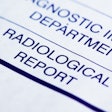
The term "physician extender" can include a radiologist assistant (RA), a physician assistant (PA), or a nurse practitioner (NP). The rules for use of these nonphysician providers (NPPs) are different for each one and they vary from state to state according to their licensure laws.
 Sandy Coffta.
Sandy Coffta.In some cases, the practice may bill and be reimbursed separately for the services of an NPP. Understanding the differences is key to getting started with physician extenders.
A registered radiologist practitioner assistant, abbreviated RA, RRA, or RPA, is trained initially as a radiologic technologist and then achieves additional training and credentialing. The American Registry of Radiologic Technologists (ARRT) certifies RRAs, who work under the supervision of a radiologist and serve as an assistant to perform patient assessment, patient management, and selected clinical imaging procedures.
RRAs are not qualified to perform any level of imaging interpretation, but they may make observations in communication with the supervising radiologist. The ARRT maintains an Entry Level Clinical Activities list that describes the procedures an RRA might perform, subject to any limitations imposed by state licensing and/or the individual practice's desires.
The capabilities of a PA or NP are similar to each other, and both are governed by state licensing as to their scope of practice. Both PAs and NPs may obtain National Provider Identification (NPI) numbers that allow their services to be reimbursed by Medicare.
In some states an NP may practice independently, but generally both NPs and PAs work in collaboration with a physician practice. In our experience PAs are the most common physician extenders in radiology practices, usually providing services along with interventional radiologists (IR).
Services in radiology practices
The services that may be provided by NPPs are governed by state law as well as by hospital credentialing rules. It is most important to be aware of the scope of practice available through the licensure in the state where your practice operates, and also to check with the hospital before having NPPs provide services in your practice.
Generally, however, NPPs will be able to perform minimally invasive procedures such as paracentesis, thoracentesis, percutaneous biopsies, and central venous access. They would also be able to assist with evaluation and management (E/M) visits with IR patients.
The rules related to supervision and reimbursement of NPPs have been changing over the past few years. The 2019 Medicare Physician Fee Schedule (MPFS) allowed RRAs to perform diagnostic tests under "direct supervision," an upgrade from "personal supervision," and a change that allows radiologists to be simultaneously productive in other ways.
In 2020 Medicare began to allow both PAs and NPs to supervise the performance of diagnostic testing within their scope of practice and state law. Pending legislation known as MARCA (the Medicare Access to Radiology Care Act) would provide Medicare reimbursement for the nondiagnostic services of RRAs. All of these Medicare regulations are predicated on the ability of the NPP to perform the specific service within the scope of their state licensure.
The ability to bill and be reimbursed for the services of NPPs varies depending on the site of service. PAs and NPs, as providers with NPI numbers, may perform services and the practice may be reimbursed for those services.
However, reimbursement for the services of RRAs who are not considered to be providers is included in the technical component (TC); in the hospital, the TC is paid to the hospital facility while in the office the TC is included in the global payment to the practice.
In the IR setting, PAs and NPs may assist the radiologist in the pre- and postprocedure evaluation and management services. Initial patient visits require that the physician be present to discuss the procedure with the patient and develop a treatment plan, but the NPP can obtain the patient's medical history and other preliminary information that will lessen the radiologist's time.
In the hospital, this is considered a "shared visit" that is billed at 100% of the MPFS under the physician's NPI. In the office setting, the services of the NPP may be considered "incident-to" the physician's services and the entire encounter is also billed at 100% of the MPFS under the physician's NPI.
In addition, since the majority of interventional radiology procedures are assigned 0-day global codes, postprocedure visits can be handled by the NPP and be billed either at the 100% physician level if the incident-to rules are met, or at 85% of the MPFS if they are not.
When considering the addition of physician extenders to your practice it is important to understand the differences among the various candidates. The practice should determine its goal for the addition of extenders -- is it to increase physician efficiency, add a billable provider to the practice, or both?
State licensing regulations and hospital credentialing rules will also shape the ultimate decision. Once on board, the physicians and NPPs will have to understand the rules for performing and documenting their individual involvement with the patient that will assure the practice is billing in compliance with Medicare regulations.
Sandy Coffta is the vice president of client services at Healthcare Administrative Partners.
The comments and observations expressed are those of the author and do not necessarily reflect the opinions of AuntMinnie.com.



















